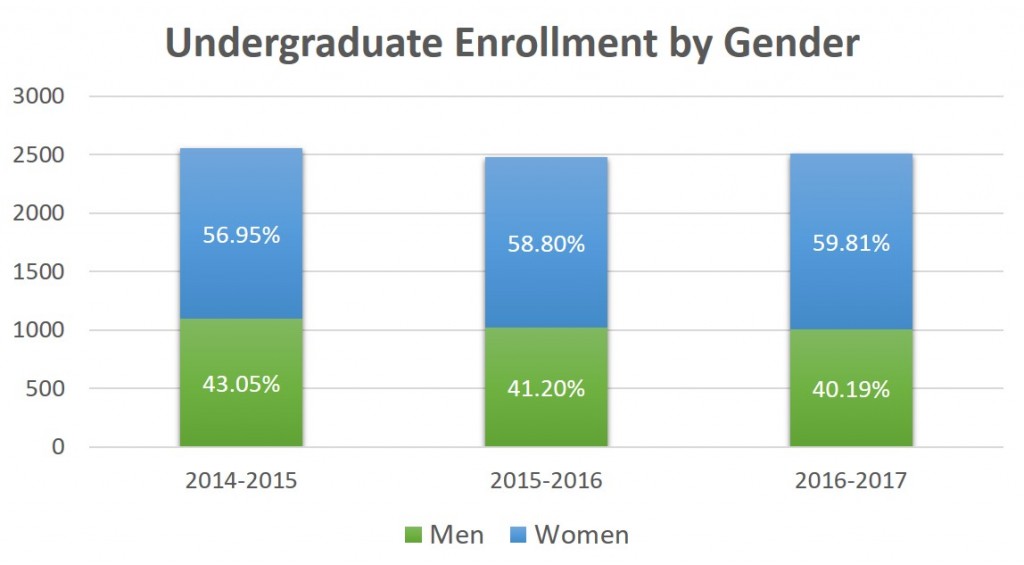The motivation for this article came from a heterosexual, female friend saying, “Why are there no good guys here [at UPS]? All the good guys are either already dating someone or not interested in women!”
One explanation for the seeming lack of “good” guys could be due to the general gender imbalance of higher education, and especially private institutions. Here at UPS, we’ve seen a similar trend. According to the Office of Institutional Research’s Common Data Set, we have seen our female-male ratio slide closer to 60-40 over the past few years. (This obviously fails to account for people not identifying on the gender binary)
 Focusing on the 2016-2017 school year, the most recent we have data for, there were 1500 women and 1008 men, which works out to an almost 3:2 ratio. We also need to account for students who identify as LGBT, which tends to be around 5% of the population in the United States. While this number may not represent the UPS population perfectly, it will help bring the numbers closer to reality. So, by taking 2.5% of each gender out, we would come up with 1463 heterosexual women and 983 heterosexual men. Of that subset, some are already in relationships, which I would estimate at 10%, so then we would end up with 1317 single, heterosexual women and 885 single, heterosexual men. Assuming every male was matched with one female, there would be 432 single women left after everyone matched up.
Focusing on the 2016-2017 school year, the most recent we have data for, there were 1500 women and 1008 men, which works out to an almost 3:2 ratio. We also need to account for students who identify as LGBT, which tends to be around 5% of the population in the United States. While this number may not represent the UPS population perfectly, it will help bring the numbers closer to reality. So, by taking 2.5% of each gender out, we would come up with 1463 heterosexual women and 983 heterosexual men. Of that subset, some are already in relationships, which I would estimate at 10%, so then we would end up with 1317 single, heterosexual women and 885 single, heterosexual men. Assuming every male was matched with one female, there would be 432 single women left after everyone matched up.
This imbalance connects with the economic idea of market thickness. Market thickness addresses the number of buyers and sellers in a market, so a thick market has many buyers and sellers and usually provides more efficient and better matches. For heterosexual women, the dating market at UPS functions as a thin market with fewer men, leading to less efficient matches and less choices for matches. Additionally, this shortage of available men makes each man “worth more” as a scarce resource, which increases their bargaining power, and may additionally raise the benefit required for them to even consider dating someone. Some articles even speculate that these gender imbalances are a big reason why “hookup culture” is so prevalent at US colleges. Basically, the shortage of men allows them to avoid commitment in favor of hooking up because the quantity of men demanded exceeds the quantity supplied.
In conclusion, if you are a single heterosexual woman at UPS like my friend, your dating prospects may be limited by the lack of thickness in this dating market. If you are a single heterosexual man at UPS, be aware of the market thickness and how that may impact your decision-making, but don’t abuse it.
I would like to clarify that there are several cultural assumptions that come into play in this article, mainly: men prefer hooking up to commitment, women only want committed relationships, and that college is the place to meet your significant other. While I think these assumptions align with some students, they may not for others. I also see the value of examining dating as a market, but don’t believe dating should be inherently transactional.
PS. If you’re looking for a laugh related to dating and finding a partner, check out this talk by Peter Backus, who wrote his economics thesis about why he doesn’t have a girlfriend.
